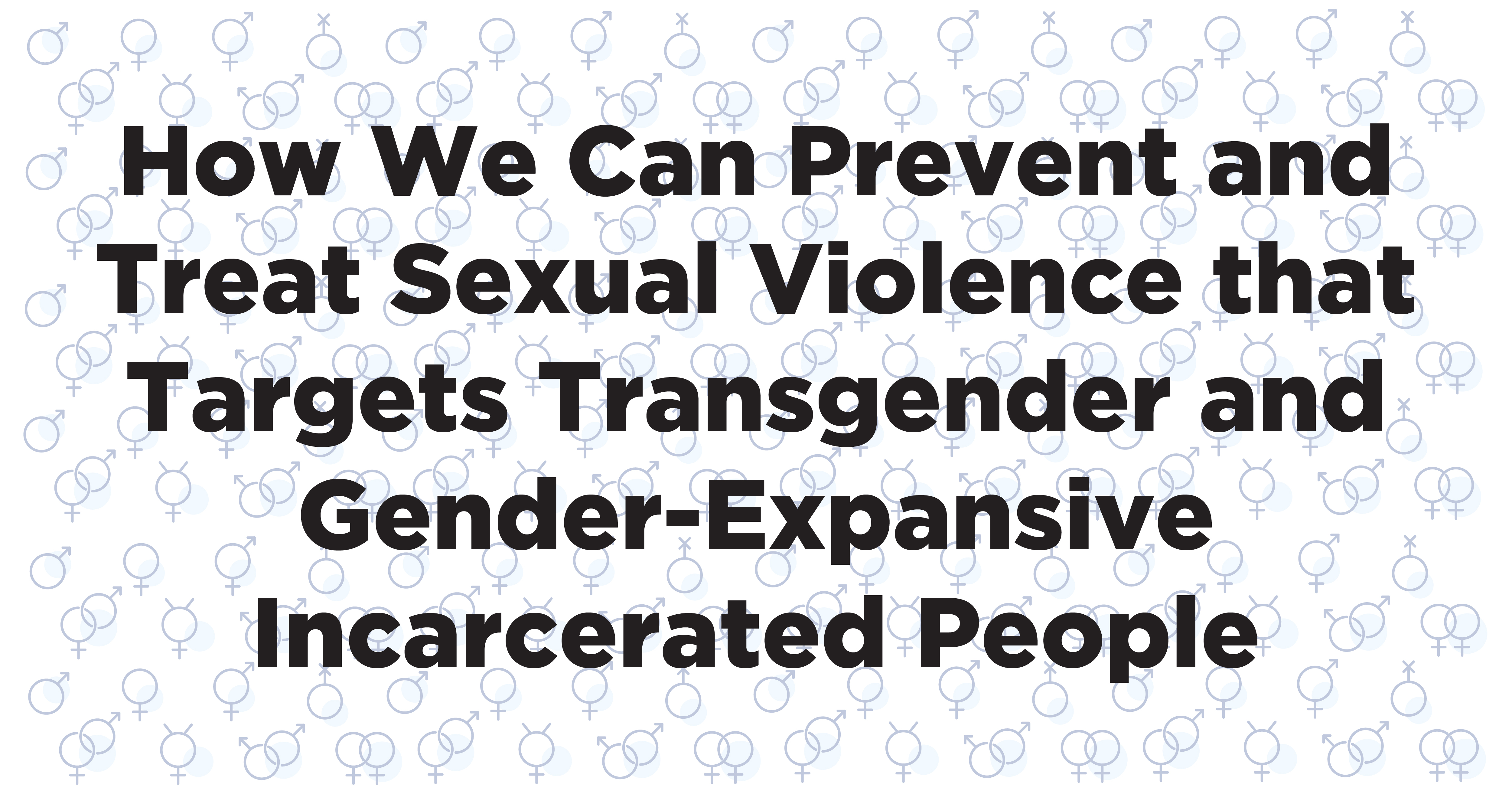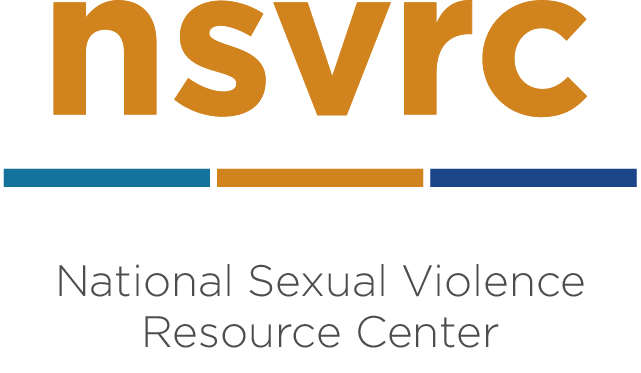
This is the first excerpt of a two-part interview. Be sure to read the second part here.
- When transgender/gender-expansive incarcerated people face restrictions on forms of gender expression like being denied the ability to shave or grow out their hair, get gender-affirming undergarments, or the dignity of being recognized by their chosen name instead of their legal name, how does this contribute to an environment that allows or outright encourages sexual harassment and assault?
One of the many challenges that trans and nonbinary people face in detention is a denial of their identity. I think that the denial of people’s identity honestly goes beyond restrictions to transition-related care, whether that’s social, legal, or medical transition…but I think that is also absolutely a part of it. That care is often severely restricted inside of many different types of detention facilities. What we find is that a lot of incarcerated trans folks are denied access to hormone replacement therapy (HRT), and other necessary medical treatments. They don’t have access to gender-affirming items like clothing, binders, gaffs, all sorts of things, which for many people can exacerbate their sense of distress and gender dysphoria. Unfortunately, even in states where there are more legal protections for trans people in detention, what we find is that sometimes those rights aren’t upheld inside of the facilities. So trans people are really on their own, and they are often having to fight for their basic healthcare needs. We find that because of outdated policies and different hurdles in terms of enacting good policies, it’s virtually impossible for transgender people to do things like get their name or their gender marker changed inside of a facility, which often leads them with identification documents that don’t match their gender identity. Without access to a name and gender marker change, incarcerated people are often subjected to constant misgendering. What we can see both in the community and also in detention is that when people don’t have access to transition-related care, it exacerbates the sense of dehumanization that transgender individuals face. That also increases their risk of substance abuse, HIV transmission, suicide…so many different issues. It goes back to dehumanization, erasure of identity, and strong anti-trans attitudes that are so pervasive inside detention facilities. All of those different pieces and those issues lead to real, tangible issues and violence against trans folks. It leads to misgendering, derogatory comments, harassment, sexual harassment, physical violence, and sexual violence. It’s all interconnected.
- For advocates and service providers who want to extend their reach and services to incarcerated people, what should they know about the different obstacles, stigmas, and barriers faced by adult transgender/gender-expansive incarcerated people vs. minors in juvenile facilities?
For incarcerated transgender people, whether we’re talking about adults or minors, we know that trans folks are at an incredibly high risk for violence and abuse, whether that’s abuse perpetrated by staff or other incarcerated individuals. Government reports have found that around 40% of incarcerated transgender people are sexually assaulted in a one-year period. Those same issues exist regardless of the age of the person. When we’re thinking specifically about sexual abuse, we’re thinking about all the things that lead up to sexual abuse, including sexual harassment, ongoing violence, and other forms of coercion and issues that trans folks face regardless of their age. We know that trans folks are incredibly vulnerable to things like invasive searches by corrections staff. We know that trans folks in detention are often harassed because people want to humiliate and punish trans folks because of their identity. Regardless of someone’s age, I would say that the issues are the same. Trans folks of all ages face barriers in terms of reporting violence as well whenever they seek support. There’s this pervasive anti-trans sentiment from staff and other incarcerated people, which leads to a culture where transgender survivors are not taken seriously and sometimes they’re blamed for the violence that they face. For a lot of people, they just have an overwhelming amount of fear about being told that the abuse they experienced was consensual or they face retaliation, which further discourages reporting. This is true for youth and adults. That’s really important for advocates to think about. “Why might someone come to me? Why might someone not feel comfortable coming to me? How can I lessen the barriers to someone seeking support?” Regardless of what type of facility a survivor is in, and what age they are, these are going to be issues across the board.
- If a transgender/gender-expansive incarcerated person experiences sexual abuse, assault, and/or harassment by a prison guard, what are their immediate options for safety and/or justice?
When we’re thinking about someone’s options for safety and justice, I think it’s important to think about, “What does justice even really mean?”. I think it can look so many different ways for survivors. Specifically for transgender people, oftentimes, “justice” for that person doesn’t necessarily exist in our criminal legal system. Transgender people have been failed by the very systems that should be in place to support them. For a lot of people, reporting doesn’t feel like an option, and it doesn’t feel like a place where people can seek safety and support. Oftentimes, people are left with needing to find other avenues of support-- whether that’s reaching out to local advocacy organizations, getting support of peers, and other types of non-traditional forms of justice and safety. When we’re thinking about a perpetrator who is a staff member, the main thing that is in place to protect folks in detention from sexual abuse and sexual harassment is going to be the Prison Rape Elimination Act (PREA). The PREA standards are designed to help protect people against abuse and provide survivors with various avenues to report. They also provide some guidelines on how to investigate these reports and how to provide support to people after abuse occurs. Unfortunately, what we find is that while many facilities know that they need to follow these standards, a lot of the time, the way that the PREA standards are actually implemented is not truly meaningful. Oftentimes, trans folks are left without recourse, and they are still left fearing a lot of retaliation. This retaliation is very real and can take a lot of forms. It can be the denial of medical care, loss of work assignments, and dangerous housing changes. For a lot of people, the idea of being placed in protective custody or segregated housing can exacerbate someone’s isolation. If staff are perpetrating abuse, staff often protect other staff members, and the retaliation is increased.
So, there are so many things that deter people from reporting. When I’m thinking about, “What is someone’s option for safety or justice?”, sometimes it’s about, “Where can I seek justice that’s outside of the system?” because oftentimes the system has failed that person over and over and over again from before arrest to once they’re incarcerated to after they are released. Especially if an assault occurs while that person is incarcerated. Oftentimes, survivors, particularly marginalized survivors like trans survivors in detention, rely on outside advocates or outside organizations to help uplift their voices. I think it’s just really important for advocates to recognize that trans folks are experts in their own safety, so it’s really important to see and ask, “What works for you? How can I support you?” We can’t be making those decisions for people. We have to do that in collaboration with the folks that we’re working with.
- Are there differences in experiences or sensitivities between transgender men and transgender women survivors (currently in prison or who experienced sexual violence during former incarceration) that rape crisis centers should know about?
Any time I get asked this question, I think the main point is that transgender men, transgender women, gender-expansive people, nonbinary people, and any non-cisgender people, across the board, face an incredible amount of stigma and discrimination, in particular in detention settings. There are a lot of similarities that are going to exist between folks’ experiences because of a lot of that strong stigma and discrimination. There are some differences though. I think a lot of those differences are because of society’s understanding, or lack of understanding, of different trans identities. For example, transgender women are often more visible in our society and more visible in the media. For trans women, they often face a lot of hatred and a lot of physical violence whereas transgender men are largely invisible, so they face different levels of issues accessing services when people don’t understand or even recognize their identity. In terms of transgender folks who are incarcerated, a lot of differences that we see in terms of people’s experience are due to the type of facility that the person is housed at. The culture at institutions for men and the culture at institutions for women vastly vary. Transgender people are rarely housed at facilities that align with their identity. In most cases, transgender women are automatically placed in facilities for men and transgender men are housed in facilities for women. Most of the time, these placements are based on that person’s sex assigned at birth, and they don’t typically take into consideration the person’s sense of identity or where they would be safest. In terms of, “What can advocates do?” or “What should advocates know?”, I think it’s really helpful for advocates to hear directly from the people impacted and to understand the specific culture at the facilities in their area.
This blog post was published in The Resource 2025 online magazine special issue on Sexual Violence and Sexual Health Outside the Gender Binary.
About the Author:
Kris Mady (He/him/his & They/them/theirs) is a Program Director at Just Detention International, a Los Angeles-based nonprofit that seeks to end sexual abuse in all forms of detention. As part of JDI's domestic programs team, Kris helps bring together corrections agencies and community rape crisis centers, ensuring that incarcerated survivors can get vital services to help them heal. Kris also supports JDI’s groundbreaking wellness programs inside prisons and jails, and responds to letters and crisis calls from incarcerated survivors. Kris previously worked at a rape crisis center providing services to survivors via hotline, hospital and legal accompaniment, and support groups. He has also served as the board secretary for a youth LGBTQ organization in South Carolina and assisted with a small grants program providing support and financial assistance for transgender people.
